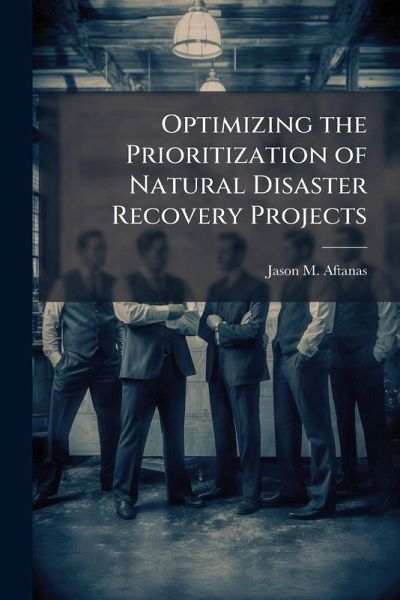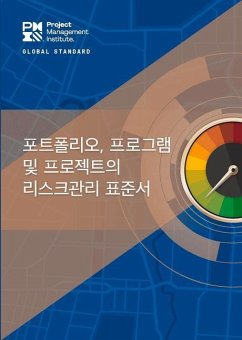
Optimizing the Prioritization of Natural Disaster Recovery Projects
Versandkostenfrei!
Versandfertig in über 4 Wochen
22,99 €
inkl. MwSt.
Weitere Ausgaben:

PAYBACK Punkte
11 °P sammeln!
Prioritizing reconstruction projects to recover a base from a natural disaster is a complicated and arduous process that involves all levels of leadership. The project prioritization phase of base recovery has a direct affect on the allocation of funding, the utilization of human resources, the obligation of projects, and the overall speed and efficiency of the recovery process. The focus of this research is the development of an objective and repeatable process for optimizing the project prioritization phase of the recovery effort. This work will focus on promoting objectivity in the project ...
Prioritizing reconstruction projects to recover a base from a natural disaster is a complicated and arduous process that involves all levels of leadership. The project prioritization phase of base recovery has a direct affect on the allocation of funding, the utilization of human resources, the obligation of projects, and the overall speed and efficiency of the recovery process. The focus of this research is the development of an objective and repeatable process for optimizing the project prioritization phase of the recovery effort. This work will focus on promoting objectivity in the project prioritizing process, improving the communication of the overall base recovery requirement, increasing efficiency in utilizing human and monetary resources, and the creation of a usable and repeatable decision-making tool based on Value Focused Thinking and integer programming methods. This work has been selected by scholars as being culturally important, and is part of the knowledge base of civilization as we know it. This work was reproduced from the original artifact, and remains as true to the original work as possible. Therefore, you will see the original copyright references, library stamps (as most of these works have been housed in our most important libraries around the world), and other notations in the work. This work is in the public domain in the United States of America, and possibly other nations. Within the United States, you may freely copy and distribute this work, as no entity (individual or corporate) has a copyright on the body of the work. As a reproduction of a historical artifact, this work may contain missing or blurred pages, poor pictures, errant marks, etc. Scholars believe, and we concur, that this work is important enough to be preserved, reproduced, and made generally available to the public. We appreciate your support of the preservation process, and thank you for being an important part of keeping this knowledge alive and relevant.












